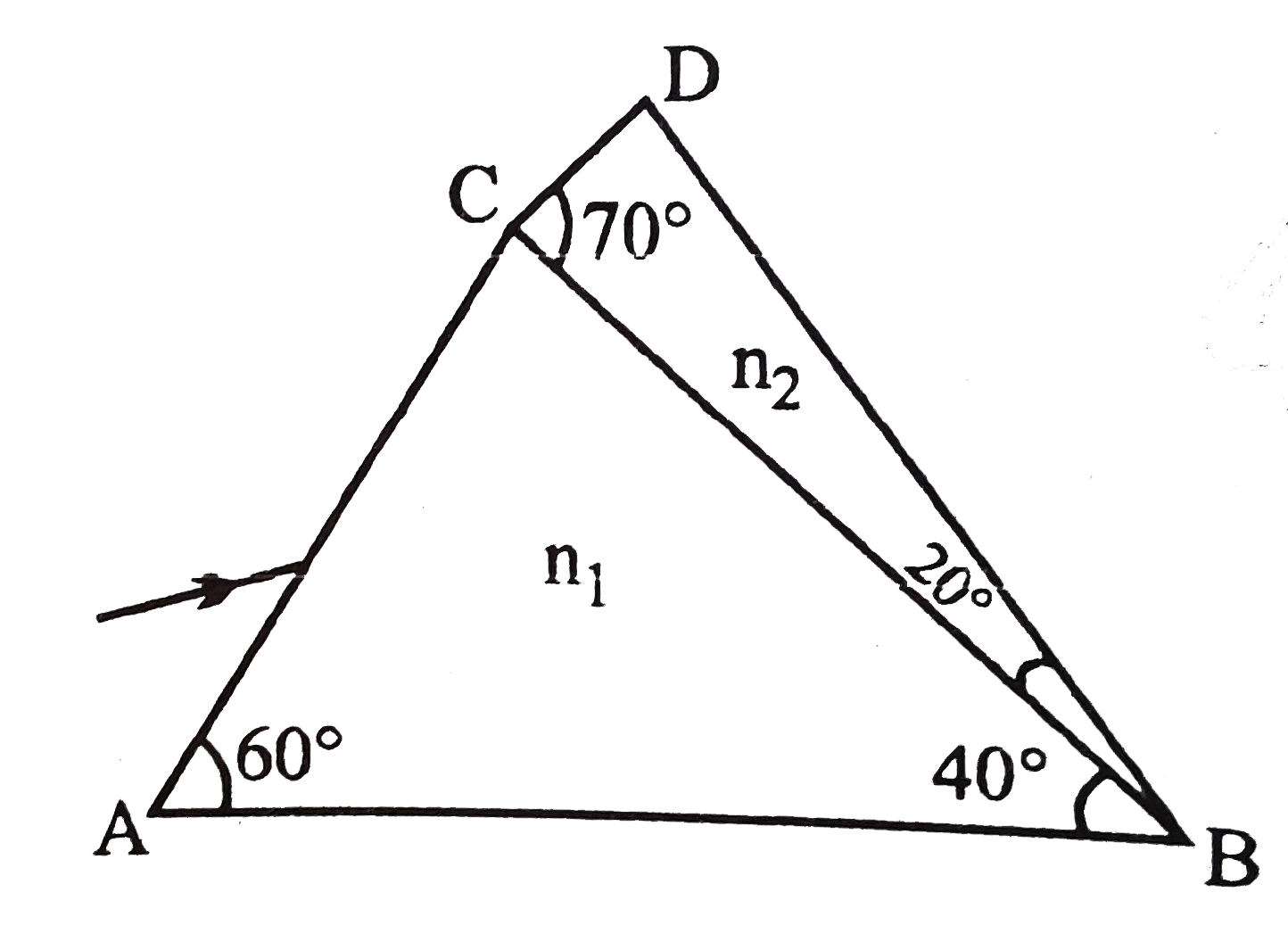The figure shows two thin rods , one made of aluminium [α=23×10−6(C∘)−1] and the other of steel [α=12×10−6(C∘)−1]. Each rod has the same length and the same initial temperature . They are attached at one end to two separate immovable walls. Temperature of both the rods is increased by the same amount , until the gap between the rods vanishes . Where do the rods meet the gap vanishes?
![The figure shows two thin rods , one made of aluminium [alpha = 23 xx 10^(-6) (C^(@))^(-1)] and the other of steel [alpha = 12 xx 10^(-6) (C^(@))^(-1)]. Each rod has the same length and the same initial temperature . They are attached at one end to two separate immovable walls. Temperature of both the rods is increased by the same amount , until the gap between the rods vanishes . Where do the rods meet the gap vanishes?](https://d10lpgp6xz60nq.cloudfront.net/physics_images/ALN_PHY_C07(I)_S01_077_Q01.png) Solution in Gujrati
Solution in Gujrati
The rods meet exactly at the midpoint.
The rods meet to the right of the midpoint.
The rods meet to the left of the midpoint .
Information insufficient
The correct Answer is:B
As αAt>αsteel so expansion in aluminum rod is greater .
Topper's Solved these Questions
- GEOMETRICAL OPTICSBOOK - ALLEN CHAPTER - GEOMETRICAL OPTICSEXERCISE - EXERCISE -01
65 Videos
- GEOMETRICAL OPTICSBOOK - ALLEN CHAPTER - GEOMETRICAL OPTICSEXERCISE - EXERCISE -02
82 Videos
- GEOMETRICAL OPTICSBOOK - ALLEN CHAPTER - GEOMETRICAL OPTICSEXERCISE - subjective
14 Videos
- CURRENT ELECTRICITYBOOK - ALLEN CHAPTER - CURRENT ELECTRICITYEXERCISE - EX.II
66 Videos
- GRAVITATIONBOOK - ALLEN CHAPTER - GRAVITATIONEXERCISE - EXERCISE 4
9 Videos
Similar Questions
On an X temperature scale, water freezes at −125.0∘X and boils at 375.0∘X. On a Y temperature scale, water freezes at −70.0∘Y and boils at −30.0∘Y. The value of temperature on X-scale equal to the temperature of 50.0∘Y on Y-scale is
View SolutionA triangular plate has two cavities , one square and one rectangular as shown in figure . The plate is heated.
_E01_066_Q01.png)
View SolutionA prism of refractive index n1 & another prism of reactive index n2 are stuck together without a gap as shown in the figure.The angle of the prisms are as shown. n1&n2depend onλ,the wavelength of light according to n1=1.20+10.8×104λ2&n2=1.45+1.80×104λ2 where λ is in nm.

(i)Calculate the wavelength λ0for which rays incident at any angle on the interfaceBCpass through without bending at that interface.
(ii) for light of wavelength λ0,find the angle of incidencei on faceACsuch that the deviation produced by the combination of prism is minimum.
View SolutionIn the Bohr's model of hy drogen atom, the electron moves around the nucleus in a circular orbit of radius 5×10−11m. Its time period is 1.5×10−16s. The current associated with the electron motion is:-
View SolutionAssertion : The difference in the value of acceleration due to gravity at pole and equator is proportional to square of angular velocity of earth.
Reason : the value of acceleration due to gravity is minimum at the equator and maximum at the pole.
View SolutionThe length of s steel rod exceeds that of a brass rod by 5 cm. If the difference in their lengths remains same at all temperature, then the length of brass rod will be: (α for iron and brass are 12×10−6/∘C and 18×10−6/∘C, respectively)
View SolutionThe difference in length of an iron rod and a copper rod at 50^(@)C is 2 cm. This difference remains the same also at 450^(@)C . What are the lengths of the rods at 0^(@)C ? Given, alpha for iron =12 times 10^(-6@)C^(-1) and alpha for copper =17 times 10^(-6@)C^(-1) .
View SolutionDue to rise in temperature of a brass rod by 100∘C, its length increases by 0.5 cm. What was the initial length of the rod? α for brass =19×10−6∘C−1.
View SolutionTwo copper rods and one aluminium rod of the same length are joined together to form an equilateral triangle ABC. A rod AD of another material connects the vertex A to the mid-point D of the base (aluminium) rod of the triangle. For small rise in temperature of the system there will be no tendency for the sides of the triangle to buckle. Determine the coefficient of linear expansion of the material of the rod AD. Given, α for copper =16×10−6∘C−1 and α for aluminium =26×10−6∘C−1.
View SolutionTwo rods, one of iron and the other of aluminium, are heated to the same temperature. Then,
View SolutionA steel rod of length 5m is fixed rigidly between two supports. a of steel = 12×10−6/∘C,Y=2×1011Nm−2. With the increase in its temperature by 40∘C, the stress developed in the rod is
View SolutionA meter rod made of steel is correct at 0∘C and other meter rod of same material is correct at 30∘C. If α=12×10−6/∘C, the difference between their lengths at 20∘C is
View SolutionA steel rod of length 5m is fixed rigidly between two supports. a of steel = 12×10−6/∘C,Y=2×1011Nm−2. With the increase in its temperature by 40∘C, the stress developed in the rod is
View SolutionThe length of a steel rod exceeds that of a brass rod by 5cm. If the difference in their lengths remains same at all temperatures, then the length of brass rod will be : ( α for iron and brass are 12×10−6/°Cand18×10−6/°C respectively )
View SolutionThe difference between the lengths of steel rod and a brass rod is 0.6 at all temperatures. What are their lengths at 0^@C ? (alpha_Steel = 12 xx 10^-6//^@C , (alpha_(brass)= 18 xx 10^-6//^@C )
View SolutionA steel rod when measured with a zinc scale (α=26×10−6/∘C) appears to be 1 m long when both rods are at 20∘C . If the zinc scale was graduated at 0∘C , what is the true length of the steel rod at 0∘C ? α for steel = 12×10−6/∘C .
View Solution
